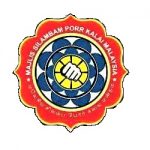hiSTORY OF SILAMBAM PORRKALAI
Invention of Silambam
About 5000 years age, the development of Silambam art took place. It is said that it was Agasthiar who invented this art of Silambam. Later on the Indian kingdom of Chera, Chozha and Pandiya kings introduced this art in their warfare and made it compulsory for all the soldiers in the five wings of their military.Long ago, animal fighting styles were imitated by pre-historic man which was a system for survival. The first weapon used was the stick which was an extension of the arm. Various weapons were later invented during the Stone and Iron Ages. At the turn of the 6th century A.D., martial arts spread from Southern India to China by a Tamil prince turned monk named Daruma Bodhidarma. Bodhidarma is the father and founder of ancient martial arts. From China, martial arts have spread to Korea & Japan. In South East Asia martial arts was introduced during the naval expansion of the ancient Sailendra, Sri Wijaya and Majapahit kingdom from Nusantara and Chola and Pallava Empires of the Tamil Country between the 2nd and 12th centuries A.D.In the recent past, at the time of Pulidevan and Veera Pandiya Kattabomman (1760–1799) this art was resurrected and was used in the fights against the British. So the British rulers banned the practice Silambam. The art was also used by the local Indonesians to rebel against the Dutch and Portugese in the colonial era, a strong point that many martial arts silat schools mushroomed here.From the south India, Silambam spread over the rest of India and it called in different name in different part of the country. Silambam is called as Nedu Vadi in Kerala; karra saamu in Andhra Pradesh; Dhanta Varisai in Karnataka, Lathi in Uttar Pradesh; Marithani in Maharashtra; Dhal Lakadi in Gujarat; Patta Pachi in Punjab & Haryana; Kathga in Jharkhand and Bihar depending upon their language spoken in their area. Back in Nusantara, silambam expanded along the Hindu Buddha kingdom into Khmer, Thailand, Vietnam, China, Sumatera ,Papua, Philliphines to Indonesian Spice Islands today the art is known as Silat or Silayat.
Silambam Porrkalai Techniques and Weapons
Silambam is a weapon-based Indian traditional martial art practiced by the traditional community of Malaysia, Singapore, Sri Lanka and Indonesia. The word silambam refers to the bamboo staff which is the main weapon used in this style. Other weapons are also used such as the Maduvu (Deer horn), Kathi (Knife) and Vaal (Sword). Unarmed Silambam called Kuttu Varisai, utilizes stances and routines based on animal movements such as the Snake, Tiger and Eagle forms.The length of the staff depends on the height of the practitioner. It should just touch the forehead about three fingers from the head, although different lengths are used in different situations. It usually measures roughly 1.68 meters (five and a half feet). The 3 feet stick called sedikutchi can be easily concealed. Separate practice is needed for staves of different lengths. The usual stance includes holding the staff at one end, right hand close to the back, left hand about 40 centimeters (16 inches) away. This position allows a wide array of stick and body movements, including complex attacks and blocks. There are numerous sub sects in silambam like nagam-16 (cobra-16), Kallapathu (Thieves ten), Kidamuttu (goat head butting), Kuravanchi, kalyanavarisai (similar to quarterstaff), Thulukkanam, and so on. Each is unique and may differ from one another in grip, posture, foot work, method of attack, length of the stick, movement of the stick etc.The bamboo staff, one of the first weapons used in Indian martial arts, was in great demand with the visitors and thanks to Bodhi Darma, this art successfully made its way to four corners of the world.
The Silambam Porrkalai Sastram in Malaysia.
At Majlis Silambam Porrkalai Malaysia, our Grandmaster and Chairman, Master N.Mooralitharan, our Patron Mr.B. Arumugam and our Advisor Dr.M.Chandra Sagaran, together with our instructors and students work in harmony in making MSPKM the world leader in Silambam martial arts.

